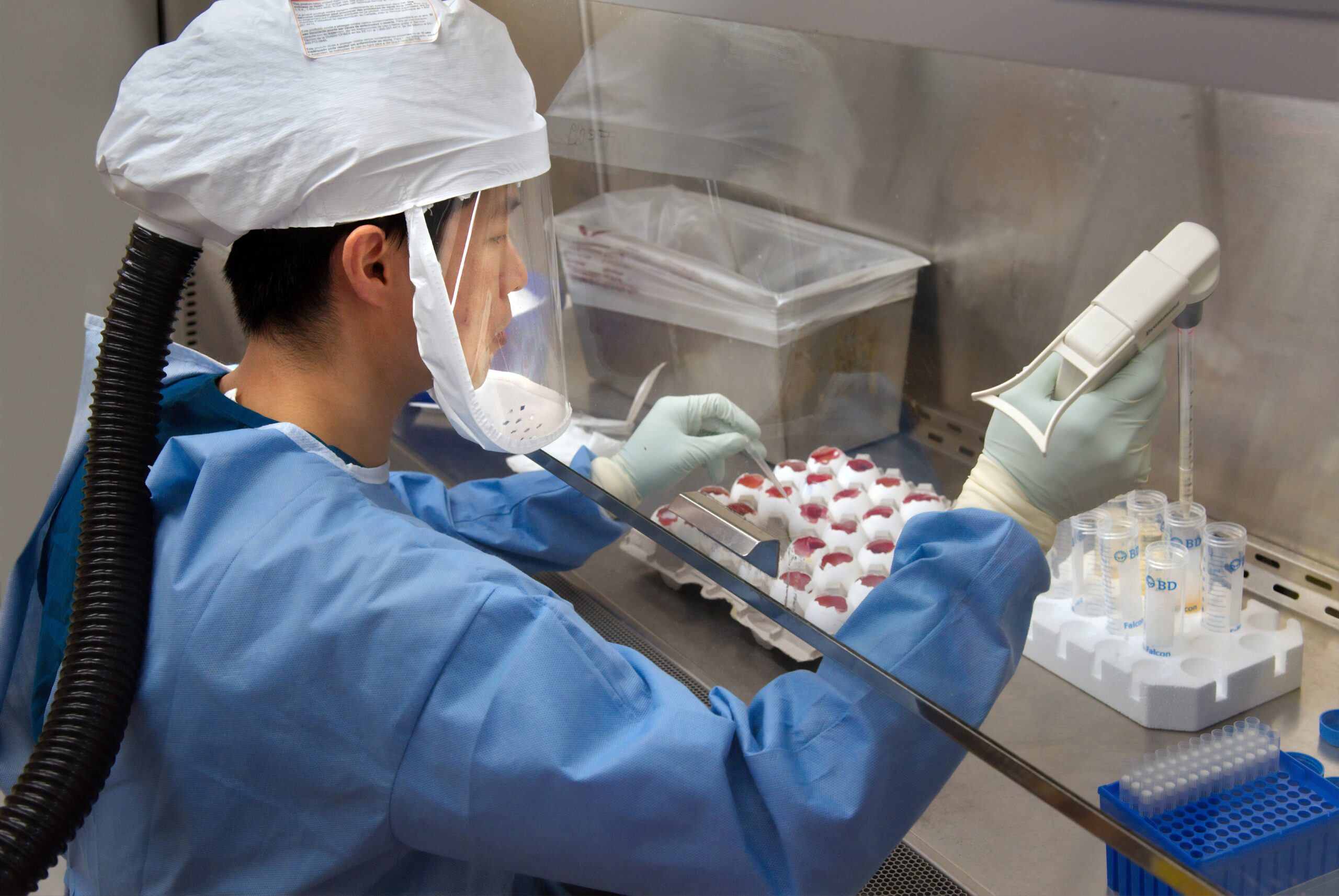By Charlotte LoBuono
The Massachusetts Biotechnology Council, the nation’s oldest biotech trade association, released its 2023 Industry Snapshot on September 6. The report found that biotech and pharmaceutical companies in Massachusetts added more research and development and biomanufacturing jobs than in most other states in 2022.
The biopharma R&D workforce in Massachusetts had a year-over-year growth rate of 8.5% between 2021 and 2022, according to the report. During the same period, the R&D workforce grew by 6.8% in California and Pennsylvania and by 1.9% in New Jersey. Biomanufacturing, meanwhile, grew by 6.3% in Massachusetts, compared with 5.8% in New Jersey, 4.6% in Maryland and 1.8% in North Carolina.
A Supportive Climate
The biotech and biopharma ecosystems in Massachusetts have many factors working together to spur growth, Ben Bradford, head of external affairs for Massachusetts Biotechnology Council (MassBio), told BioSpace. One is that the state government tends to support these industries, regardless of which party is in power. This support includes funding for the Massachusetts Life Sciences Center, which administers an internship program and gives grants and loans to life sciences companies in the state, among other initiatives, Bradford said.
Another factor is that the nonprofit ecosystem in Massachusetts, including universities, hospitals and healthcare groups, provides strong talent and R&D pipelines. “Nonprofits bring in the National Institutes of Health dollars from the federal government,” Bradford said. Although just 2% of the U.S. population lives in Massachusetts, nonprofit entities in the state received 9% of all NIH funding in 2022. The state ranked third in the country, behind California and New York, in the number of grants approved and the total amount of funds awarded by the NIH.
Pandemic-era expansion created an excess inventory of lab space across Massachusetts, which gives lessees flexibility when choosing a location. Biopharma startups now have 61.9 million square feet of lab space from which they can choose. Projections for expansion during the coming year are between 14 to 17 million square feet.
“The commercial real estate component has been building the space that companies in Massachusetts need to continue to expand, so they can put their VC money toward research and development,” said Bradford.
Venture Capital
Bradford said Massachusetts also has a venture capital community that understands the complexities of the science and the challenges of growing an early-stage biopharma company. In the first half of 2023, VC investors gave Massachusetts-based companies $3.7 billion, a decrease compared to the first half of 2022. However, that figure represents the highest first-half total of any year outside of 2020–2022, which was a record-setting period due to the COVID-19 pandemic and the race to develop a vaccine, among other factors. Bradford noted that VC funding of biopharmas in the state steadily increased from 2010 through 2023, if the three pandemic years are discounted. “VC funding continues to grow because we have such sophisticated investors here in Massachusetts,” he said.
Overall, VC investors gave biopharma companies in Massachusetts 32% of VC funds invested in the industry in the U.S. during the first half of this year, a 6% increase from the first half of 2022. The average round of funding was $34.2 million, compared to $15.6 million nationally.
In the Pipeline
Excluding megacap pharmaceutical companies and those that make generics, companies in Massachusetts have the second highest rate of R&D spending, behind those based in California. Massachusetts R&D expenditures account for 33% of national R&D spending. Biotechs in the state spend about 69% of their total operating budget on R&D.
Perhaps as a result, the drug development pipelines of Massachusetts-based companies make up 14.9% of the U.S. pipeline and 6.5% of the global pipeline, a decrease from last year’s figures of 15.6% and 7.2%, respectively. The most common therapeutic areas for drug development in Massachusetts are oncology (34%), central nervous system (16%) and infectious disease (10%). Although Massachusetts has a population of less than 7 million people, it has a drug development pipeline that is almost half that of China, a nation of 1.3 billion people.
Acquisitions in the Commonwealth
During the first half of 2023, 11 companies based in Massachusetts were acquired by companies such as Takeda, AstraZeneca and Ipsen, for a total of $10.47 billion. This is an increase from $4.47 billion for the same number of acquisitions during the same period last year.
Massachusetts-based companies such as Ironwood Pharmaceuticals, Moderna and Leap Therapeutics acquired eight companies during the first half of 2023, for $1.39 billion. This is an increase over the same period last year, during which seven companies were acquired for $649 million.
In another sign of continued Genetown momentum, on September 26 the Advanced Research Projects Agency for Health (ARPA-H) announced that the Investor Catalyst Hub for its new ARPANET-H network will be located in Cambridge. “MassBio feels positively about the future of the industry in the state,” Bradford said. “That said, we need to ensure that the current headwinds we are facing do not grow.”


